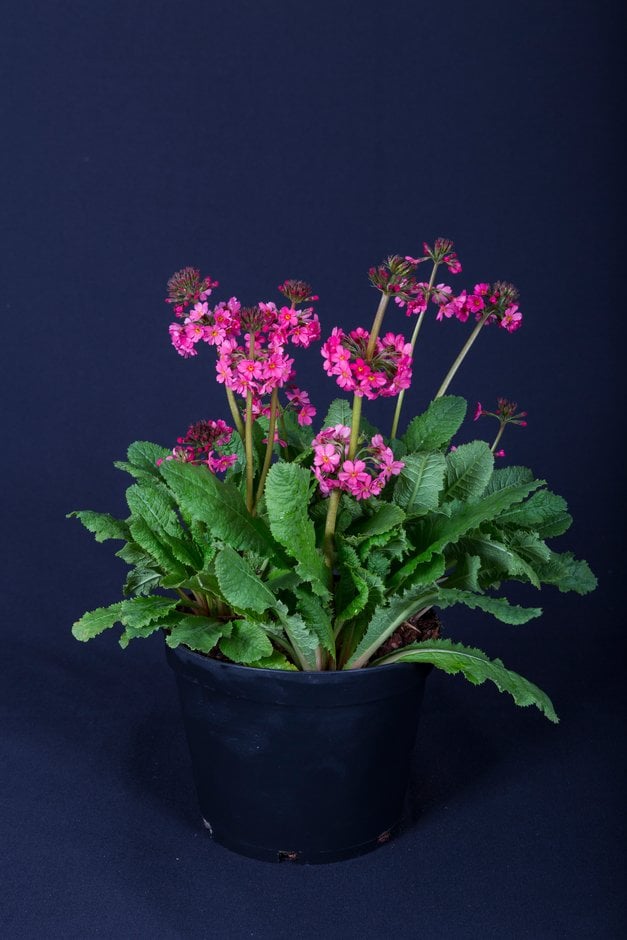Size
Ultimate height
0.1–0.5 metresTime to ultimate height
1–2 yearsUltimate spread
0.1–0.5 metresGrowing conditions
Moisture
Moist but well–drained, Poorly–drainedpH
Acid, NeutralColour & scent
| Stem | Flower | Foliage | Fruit | |
| Spring | Green | |||
|---|---|---|---|---|
| Summer | Red | Pink | Green | |
| Autumn | Green | |||
| Winter |
Position
- Partial shade
Aspect
North–facing or East–facing
Exposure
Sheltered Hardiness
H6Botanical details
- Family
- Primulaceae
- Native to GB / Ireland
- No
- Foliage
- Deciduous
- Habit
- Matforming
- Genus
Primula are herbaceous or semi-evergreen perennials, forming a basal rosette of simple leaves, with salver-shaped or bell-shaped flowers which may be solitary or carried in an umbel or in whorls on an erect stem
- Name status
Unresolved
- Horticultural Group
- Proliferae section primulas are moisture-loving herbaceous or semi-evergreen perennials forming a rosette of basal leaves, with erect stems each carrying several whorls of salver-shaped flowers
How to grow
Cultivation
Grow in partial shade in deep, humus-rich, moist neutral to acid soil. Will tolerate sun if soil remains moist at all times
Propagation
Propagate by division in early spring; root offsets in autumn or take root cuttings in winter when dormant
Suggested planting locations and garden types
- City and courtyard gardens
- Cottage and informal garden
- Banks and slopes
- Flower borders and beds
- Wall side borders
Pruning
No pruning necessary, tidy old or diseased leaves
Pests
May be susceptible to aphids, caterpillars, slugs and vine weevil
Diseases
Brown core of primulas, grey moulds, leaf spot (fungal) and a virus may be a problem
Love gardening
Sign up to receive regular gardening tips, inspiration, offers and more
View our Privacy Policy
Get involved
The Royal Horticultural Society is the UK’s leading gardening charity. We aim to enrich everyone’s life through plants, and make the UK a greener and more beautiful place.
